User:Crylante/Sandbox/Azmara: Difference between revisions
No edit summary |
|||
| Line 83: | Line 83: | ||
===Amendist Reaction and Independence=== | ===Amendist Reaction and Independence=== | ||
===Commonwealth of Azmara=== | ===Commonwealth of Azmara=== | ||
=Tables= | |||
===Number 1=== | ===Number 1=== | ||
{| class="wikitable" | {| class="wikitable" | ||
| Line 578: | Line 578: | ||
| minister1_termend = October 1, 1933 | | minister1_termend = October 1, 1933 | ||
}} | }} | ||
=Althist Azmara= | =Althist Azmara= | ||
{{Infobox country | {{Infobox country | ||
Revision as of 19:37, 4 March 2024
Progress Party Forþgaanenpartii | |
|---|---|
| Historical leaders | Mikel Hankssun Wiljâm Jorśsun |
| Founded | 1849 |
| Dissolved | 1905 |
| Ideology | Liberalism Radicalism Laicism Republicanism |
| Political position | Left-wing (before 1880's) Centre-left (1880's onwards) |
1848 Revolution; Commonwealth established; liberal Forþgaaners fight conservative Jorśites for power.
-1849-1861: Forþgaaners
Universal education established.
-1861-1867: Jorśites
-1867-1873: Forþgaaners
-1873-1876: Jorśites
-1876-1888: Forþgaaners
Death penalty abolished.
-1888-1895: Jorśites
Jorśites form National Coalition.
-1895-1897: National Coalition
-1897-1900: Forþgaaners
-1900-1906: National Coalition
Rise of the labour movement; Workers' Party forms. Forþgaaners rebrand as Gold Flame.
-1906-1918: Gold Flame
FPTP abolished; emancipation of women in Fifth Amendment.
-1918-1921: National Coalition
-1921-1924: Workers'-dissident Gold Flame
New Liberals form from dissident Gold Flame.
-1924-1933: National Coalition-Gold Flame
New Liberals rename to Radicals, Azmara enters Great War on the side of Gaullica despite mass public opposition, after suspension of 1927 and 1930 elections for war effort a general strike amidst growing threat of occupation brings down the government and Azmara withdraws from the war.
-1933-1954: Workers'-Radical
Key workers' rights established, Azmara re-enters war, welfare state established, National Coalition collapses as moderates from Sotirian Democrats from its ashes.
-1954-1957: Sotirian Democrats-Gold Flame
-1957-1960: Workers'-Radical
-1960-1963: Sotirian Democrats-Gold Flame
-1963-1966: Workers'-Radical
Abortion decriminalised.
-1966-1969: Gold Flame-Sotirian Democrats
-1969-1975: Radical-Sotirian Democrats
-1975-1978: Workers'-Radical
-1978-1987: Gold Flame-Sotirian Democrats
Neoliberalism is in power. A programme of deregulation and privatisation is pursued. Workers' Party support sinks to low levels.
-1987-1993: Gold Flame-Radical
Civil unions for same-sex couples introduced: neoliberalism continues.
-1993-1999: Workers' Party-Radical
The Workers' Party pursues a new centrist outlook: Socialist Party splits in protest, Green Party grows in support.
-1999-2005: Workers' Party-Gold Flame
The Grand Coalition comes to power; same-sex marriage legalised, multiculturalism encouraged, soft drugs decriminalised.
-2005-2008: Sotirian Democrats-Radical-Green
A centrist coalition comes to force against the growing threat of the right-wing People's Party. Status quo is largely maintained.
-2008-2011: Workers' Party-Radical-Sotirian Democrats-Green
A centre-left government is established, but little is achieved due to disagreements between parties.
-2011-2014: Gold Flame-Sotirian Democrats w/ People's support
Controversially, the support of the right-wing People's Party is used to form a government. Restrictions on immigration increased. New single issue parties such as Free Alliance and the Grey Party form.
-2014-2017: Gold Flame-Sotirian Democrats-Radical
The Radical Party agrees to support the government on the condition that the anti-immigration policies passed under the last government are repealed. New Azmara forms before election.
-2017-present: Workers'-Green-Socialist-New Azmara
A new left-wing government comes to power in Azmara in opposition to neoliberalism and Third Way politics. Eryk Bogskuuta becomes Prime Minister.
New History Section
Prehistory

Azmara has been permanently inhabited since at least 14,000 BCE, where the first arrow and spearheads date from, with agriculture emerging in around 3,750 BCE. The Azmaran Bronze Age is said to have spanned between 1,700 BCE and 500 BCE, during which it is thought the wheel was introduced to Azmara. Archaeological finds from this era are defined chiefly by jewelry and weaponry found at burial mounds, stone circles and menhirs, of which the Eśen Hill complex remains the most prominent example.
The onset of the Iron Age in Azmara is thought to have coincided with the arrival of Tenic peoples in the region, who are thought to have brought significantly more advanced metalworking to the region and become the dominant culture. It is known that the Tenic inhabitants were active traders with the Solarian Empire, with Solarian coins finding their way into Azmaran historical sites and writer Gaius Septimus describing the "peaceful barbarians of the northeast" as a "reliable source of tin".
During the 1st and 2nd centuries CE a cultural shift is thought to have taken place in Azmara, with Septimus commenting on the "warlike Ascimari peoples" displacing the native populations as Weranic peoples are thought to have moved south into the region to escape bad harvests and social unrest. It is unknown what the ultimate fate of the Azmaran Tenic culture was, yet many theories believe that they gradually assimilated into the Ascimari culture over the course of the next few centuries.
Runic inscriptions in a form of the Elder Futhark are common from the 4th century CE and detail the existence of a loose confederation of elective petty kingdoms with inscriptions detailing religion, war and politics amongst the petty kingdoms. The consolidation of Midlatun (modern day Mideltuun, Westmaark) as a key source of power is documented from the 8th century onwards and is thought to have been the earliest major settlement in the modern-day country.
Sotirianity, Marauders and Rudolphine Confederation
From the early 9th century, Mideltuun had emerged as the de facto capital of the Ascimari peoples through a campaign of vassalage and would be visited by Sotirian missionaries St. Wiljâm and St. Jorś in 854. On the 25th January, Þurisas of Mideltuun, the state's monarch, would pay homage to the Pope, which is widely commemorated as the conversion of the Azmarans to Sotirianity. Despite this, religious syncretism with traditional pagan beliefs was widespread among social classes and the introduced Solarian alphabet would be used alongside runes as opposed to supplanting them.
Many of the smaller petty kingdoms suffered during this period from marauder raids on coastal settlements and newly-built monasteries within Azmara. Much of the modern-day state of Nordberg would be occupied from 872 and would be used as a base for further raids and demands for protection money, causing many of the smaller petty states to be absorbed by Mideltuun as protection. Ultimately during the 10th century this threat would retreat and the city of Nordberg would be recaptured in 992, with the Ascimari largely de facto unified under one ruler.
The formal unification of the petty kingdoms into one state would occur as a reaction to the 1025 invasion of Borland by the Eastern Marches as the Ascimari united into the Western March for defensive reasons. Soon after this, they would join with other Weranic states into the Rudolphine Confederation to resist Estmerish conquest, which would be formalised as a confederation of states in the 1044 Treaty of Vorausdorf. A disputed monarchical election would see the southwestern portion of the March split off as the Duchy of Groonbank in 1075 yet remain a state of the Confederation.
Religious syncretism in the two states would end with the formerly largely pagan Confederation's adoption of Sotirianity in 1106 as Azmaran rulers adopted and enforced religious conformity and joined the Confederation's crusades in modern-day Ruttland and Caldia. Sotirianisation would see Solarian increasingly become the language of government and a stricter feudal system enforced on the state with a clearer division between nobility, clergy and peasants, who served in vassalage to the former two categories.
A reunion of the two states, now de facto hereditary, through marriage would happen in 1237, with the personal union, commonly referred to as the Union of the Twin Crowns or Groonbank-Westmaark, becoming a key player in Confederation politics through its dominance of the Ostbank imperial circle.
The next few centuries would see a growth in the power of Azmara's cities, key amongst them the new twin capitals of Aalmsted and Stefansburg. This resulted in the creation of the burijen system of autonomy to the cities from feudal lords in exchange for direct taxation and the creation of a burijer class outside the feudal system. Attempts to manage peasant unrest over the 15th and 16th centuries would also lead to the creation of a class of emancipated peasantry across the states, many of whom would serve as itinerant workers for nobles or come to own their own property.
Amendist Reaction and Independence
Commonwealth of Azmara
Tables
Number 1
| Nº | Portrait | Name (Birth–Death) |
Term of office | Former party | |
|---|---|---|---|---|---|

|
Mikel Hankssun (1800-1876) |
19 October 1855 | 19 October 1867 | Progress Party | |
| first president and noted radical folksmot member during the monarchy who does a lot to set up the institutions of Azmara as a liberal democracy and purges a lot of the church's influence from the govt, in his final years in office he starts suffering from dementia and increasingly hands over to his ministers, including his successor | |||||

|
Jorś Wilhjalmssun (1821-1895) |
19 October 1867 | 19 October 1873 | Progress Party (Jorśite) | |
| hankssun's much younger friend in the monarchist folksmot who serves as his foreign affairs minister throughout his presidency, notably turns away from some of hankssun's more radical projects in the sphere of anti-clericalism which causes a rift with some of his party colleagues and splits the progress party until the scary socialists come and they reunite | |||||

|
Herman Hermanssun (1821-1895) |
19 October 1873 | 19 October 1879 | Progress Party (Hermanite) | |
| hermanssun was jors's education minister the first year of their presidency then quits bc they disagree over the church's role in higher education. however now the revolution's done and the monarchists are gone the progress party starts to face issues bc the workers want rights, the nationalists want the islands back and what if sotirian revivalism hit. check back in a few decades these people are going to be big | |||||

|
Frei Mikelssun (1876-1964) |
20 January 1934 | 20 January 1940 | Workers' Party | |
| The former Minister of Finance 1921-1923 and a dissident against the National Coalition government, Mikelssun was elected President in 1934 on the first round with 69.3% of the vote. | |||||

|
Aleksander Siimunsun (1881-1965) |
20 January 1940 | 20 January 1952 | Workers' Party | |
| A former steelworker and trade unionist involved in the 1932 General Strike, Siimunsun was elected the Xth President of Azmara on the first ballot with 65.1% of the vote in 1940. He was re-elected in 1946 with 54.1% of the vote. | |||||

|
Henrik W. Þurleifssun (1887-1975) |
20 January 1952 | 20 January 1964 | The Radicals | |
| A liberal socialist academic and anti-functionalist activist, Þurleifssun was elected the Xth President of Azmara on the first ballot with 55.4% of the vote in 1952. He was re-elected in 1958 with 62.1% of the vote. | |||||

|
Loki Aarnessun (1917-1991) |
20 January 1964 | 20 January 1970 | Gold Flame | |
| A former businessman and Industry Minister 1954-1957, Aarnessun was elected the Xth President of Azmara on the second round with 54.9 of the vote in 1964. | |||||

|
Leif Alekssun (1920-1993) |
20 January 1970 | 18 September 1973 | Centre Party | |
| The former Finance Minister 1960-1963 and 1966-1969 and Member of the Folksmot 1954-1970, Alekssun was elected the Xth President of Azmara on the second round with 53.2% of the vote in 1970. He resigned in 1973 after refusing to sign a bill legalising contraception. | |||||

|
Aleksander Wiljâmssun (1919-2005) |
18 September 1973 | 17 September 1985 | Workers' Party | |
| A notable author and playwright and a former Member of the Landsmot 1966-1972 representing Cultural Organisations, Wiljâmssun was elected the Xth President of Azmara with 55.3% of the vote in 1973. He was re-elected in 1979 with with 73.4% of the vote. | |||||

|
Jana Eryksdohter (1935-) |
17 September 1985 | 16 September 1997 | Independent | |
| A notable second-wave feminist campaigner and former gymnasium teacher, Eryksdohter was elected the Xth President of Azmara with 53.7% of the vote in 1985, making her the first woman to hold the position. She was re-elected in 1991 with 76.7% of the vote. | |||||

|
Rygin Leifssun (1936-2021) |
16 September 1997 | 16 September 2003 | Workers' Party | |
| The former Minister for Culture 1987-1990 and 1993-1997 and a Church of Azmara priest by training, Leifssun was elected the Xth President of Azmara in the second round with 54.2% of the vote in 1997 and becoming the first President to be born after the Great War. | |||||

|
Liis Helmutsdohter (1951-) |
16 September 2003 | 15 September 2009 | Centre Party | |
| The former Mayor of Mideltuun 1994-2002, Helmutsdohter was elected the Xth President of Azmara in the second round with 55.6% of the vote in 2003, becoming the second woman to take the office. Her term would be marked by the onset of the 2005 Recession. | |||||

|
Lorens Aansgaarssun (1946-) |
15 September 2009 | 15 September 2015 | Independent | |
| The former Attorney-General and Minister for Justice 1995-2004, Aansgaarssun was elected the Xth President of Azmara with 62.3% of the vote in 2009. | |||||

|
Maarija Ryginsdohter (1971-) |
15 September 2015 | 21 September 2021 | Independent | |
| The former Mayor of Aalmsted 2010-14, Ryginsdohter was elected the Xth President of Azmara with 71.4% of the vote in 2015, becoming the third woman to take the office. | |||||

|
Harald Alekssun (1967-) |
21 September 2021 | Incumbent | Green Party | |
| A former marine biologist and television presenter, Alekssun was elected the Xth President of Azmara in the second round with 51.9% of the vote in 2021. | |||||
Number 2
Number 3
H. Alekssun I | |
|---|---|
5th Cabinet of Azmara | |
 Thingspeaker Hjalmer Alekssun | |
| Date formed | 15 October 1932 |
| Date dissolved | 1 October 1933 |
| People | |
| Head of state | Vacant |
| Head of government | Hjalmer Alekssun |
| Total no. of members | 16 |
| Member parties | Workers' Party Gold Flame The Radicals ADAA Freethinkers' Party Farmers' Party |
| Status in legislature | Provisional national unity government |
| Opposition cabinet | N/A |
| History | |
| Election(s) | None |
| Outgoing election | 1927 |
| Predecessor | Þ. Siimunsun III |
| Successor | H. Alekssun II |
Althist Azmara
| Portfolio | Minister | Took office | Left office |
|---|---|---|---|
| Thingspeaker | Hjalmer Alekssun | October 15, 1932 | October 1, 1933 |
| Secretary of State for Finance | Frei Mikelssun | October 15, 1932 | October 1, 1933 |
| Secretary of State for Internal Affairs | Hjalmer Alekssun | October 15, 1932 | October 1, 1933 |
| Secretary of State for Economic Affairs | Hjalmer Alekssun | October 15, 1932 | October 1, 1933 |
| Secretary of State for Foreign Affairs | Henrik W. Þurleifssun | October 15, 1932 | October 1, 1933 |
| Minister for Agriculture | Oskar Askerssun | October 15, 1932 | October 1, 1933 |
| Minister for Communications | Hjalmer Alekssun | October 15, 1932 | October 1, 1933 |
| Minister for Education | Aarne Aansgaarssun | October 15, 1932 | October 1, 1933 |
| Minister for Enterprise | Hjalmer Alekssun | October 15, 1932 | October 1, 1933 |
| Minister of Justice | Hjalmer Alekssun | October 15, 1932 | October 1, 1933 |
| Minister for Labour | Hjalmer Alekssun | October 15, 1932 | October 1, 1933 |
| Minister for Local Affairs | Hjalmer Alekssun | October 15, 1932 | October 1, 1933 |
| Minister for Sanitation | Hjalmer Alekssun | October 15, 1932 | October 1, 1933 |
| Minister of Trade | Hjalmer Alekssun | October 15, 1932 | October 1, 1933 |
| Minister for War | Hjalmer Alekssun | October 15, 1932 | October 1, 1933 |
| Minister for Welfare | Hjalmer Alekssun | October 15, 1932 | October 1, 1933 |
Kingdom of the Azmarans Kyninkryk âb de Azmaariśeren (Azmaran) | |
|---|---|
| Motto: “Friihed onder God en Kyning” "Liberty under God and King" | |
| Anthem: In syyt wyn In sweet joy | |
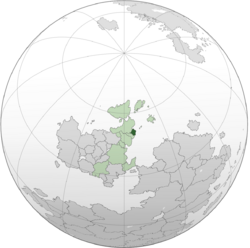 Azmara (dark green) within the Euclean Community (light green) | |
| Capital | Aalmsted |
| Official languages | Azmaran |
| Recognised regional languages | Hytklifer IJssentaal |
| Ethnic groups (2013) | 86% Azmaran 9% Euclean 5% Other |
| Demonym(s) | Azmaran |
| Government | Unitary parliamentary constitutional monarchy |
• Monarch | Frei III |
| Jana Jonsdohter (R) | |
| Legislature | Folksmot |
| Independence from Rudolphine Confederation | |
• Azmaran Revolt | 1665 |
• Consolidation after Ten Years' War | 9 March 1721 |
• Republic of Westmaark | 1786 |
• Kingdom of Azmara | 1801 |
• Glorious Revolution | 1855 |
• Current constitution | 16 November 1974 |
| Area | |
• | 62,845.44 km2 (24,264.76 sq mi) |
• Water (%) | 1.7 |
| Population | |
• 2018 estimate | 10,029,100 |
• 2013 census | 10,011,293 |
• Density | 159.58/km2 (413.3/sq mi) |
| GDP (PPP) | 2021 estimate |
• Total | $473.6 billion |
• Per capita | $47,309 |
| GDP (nominal) | 2021 estimate |
• Total | $513.5 billion |
• Per capita | $51,201 |
| Gini (2017) | low |
| HDI (2017) | very high |
| Currency | Euclo (EUC) |
| Date format | dd/mm/yyyy |
| Driving side | right |
| Calling code | +19 |
| ISO 3166 code | AZ |
| Internet TLD | .az |
Azmara, (/æzmɑːrə/; Azmaran: Azmaara [ɑzmɑːɹɑ]), officially the Kingdom of the Azmarans (Azmaran: Kyninkryk âb de Azmaariśeren [gɛmɛnʋɛlθ æβ ɑzmɑːɹɑ]), is a country located in northeast Euclea with a population of 10 million citizens. The nation consists of eight provinces and has its capital in the city of Aalmsted, whose metropolitan area backs onto many of Azmara's other large cities and comprises around 35% of the nation's population. To the southwest it borders Borland and to the northwest it borders Werania.
The Azmaran state can trace its origins to the consolidation of many of the petty kingdoms in the modern-day territory into the Western March of the Rudolphine Confederation in 1027. This state, which would later be reorganised into Twin Crowns of Groonbank and Westmaark during the 13th century, would come to be one of the pre-eminent states within the Confederation, dominating the Translanian sphere of the Confederation. Despite this, as the Amendist Reaction spread across the Confederation and found a particular stronghold amongst the lesser nobility and burghers of Groonbank-Westmaark, the state would come into specific conflict with successive Protectors over the 16th and 17th centuries, with the state seeing much bloodshed during the Amendist Wars.
Otto IX's attempts at centralisation would lead to further resistance in the state, culminating in the Azmaran Revolt of 1665, culminating in the self-government of several parts of Azmara under the Azmaran Confederation, which would further consolidate its control of the modern-day territories over the next half-century before the eventual unification of Azmara after the Ten Years' War. The Confederation would be increasingly incorporated into Soravia's sphere of influence, with Frederick I ruling the Confederation in personal union with Soravia, and the two states seeing heavy interconnection after his death. This would however be interrupted by attempts to export the Weranian Revolution to Azmara, with the Republic of Westmaark being created as a sister republic in 1794.
After the demise of the revolutionaries, Stefan I would be crowned King of Azmara in 1801, and would try and bring the concept of an enlightened monarchy to Azmara, yet after his death in 1837 his descendants' rule would become unpopular and after a series of bad harvests and confrontations with radical parliamentarians led by Jorś Wilhjâlmssun a revolution would break out in the winter of 1854, which would be ultimately satiated through the 1855 Instrument of Governance, which established parliamentary governance and extended suffrage to significant portions of the middle class. The country would introduce labour market reforms establishing a comprehensive welfare state in the late 19th and early 20th century establishing an advanced mixed economy and would adopt a policy of armed neutrality but would be invaded during the Great War by the Entente before being liberated by the Grand Alliance in 1933.
--- cba to write spiel about marysueism for the althist ---
| Political party | Main ideology | Position | Leader | Seats | Affiliation | Status | |||
|---|---|---|---|---|---|---|---|---|---|
| Folksmot | MEPs | Euclean | EP group | ||||||
| Social Democratic Workers' Party Sośalfolksrâgeliś Arbeiderpartii |
Social democracy | Centre-left | Helmut Mâþijassun | 45 / 150
|
6 / 21
|
ASE | ASE | ||
| The Right De Rehten |
Liberal conservatism | Centre-right | Jana Jonsdohter | 44 / 150
|
7 / 21
|
PCE | ACDE | ||
| Liberal Party De Linksen |
Social liberalism | Centre to centre-left | Frei Jonssun | 18 / 150
|
2 / 21
|
PLE | A | ||
| Popular Left Þyydiś Links |
Democratic socialism Green politics |
Left-wing | Karl Kryssun | 16 / 150
|
2 / 21
|
VEPE | GEM | ||
| Centre Party Midelparti |
Agrarianism | Centre to centre-right | Leif Aarnessun | 12 / 150
|
1 / 21
|
DM-PEC | A | ||
| New Democrats Ny Folksrâgeleren |
Right-wing populism | Right-wing | Hilda Maartensdohter | 11 / 150
|
2 / 21
|
None | None | ||
| Sotirian People's Party Sortiren Folkpartii |
Sotirian democracy | Centre-right | Henrik Jorśsun | 4 / 150
|
1 / 21
|
UDE | ACDE | ||
Alsbora
Alsbora | |
|---|---|
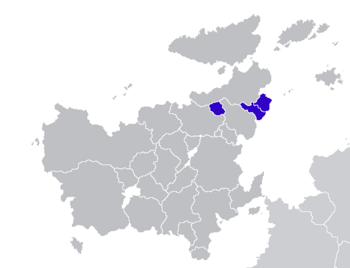 The member states of Alsbora | |
| Membership | |
| Area | |
• Total | 177,937 km2 (68,702 sq mi) |
| Population | |
• 2020 estimate | 28,917,738 |
• Density | 162.52/km2 (420.9/sq mi) |
| GDP (PPP) | 2019 estimate |
• Total | $1.326 trillion |
• Per capita | $45,859.85 |
| Currency | Euclo (€) (EUC) |
Alsbora is a nickname often used for the co-operation and joint advocacy between three northern member states of the Euclean Community: Alsland, Azmara and Borland. The name of the organisation comes from a portmanteau of the names of the three countries - Alsland, Borland, Azmara, and became widely used in Euclean politics since the accession of Alsland to the Euclean Community in 1955, yet the frequent co-operation between the three governments has never been coalesced into a formal organisation.
The term is often associated with joint foreign policy objectives of the three nations, with the three supporting increased federalisation of the Euclean Community while opposing a perceived domination of the organisation by Estmere, Gaullica and Werania and seeking to serve as a counterweight to the spheres of influence of the three countries. In some contexts, the pursual of these goals has led to co-operation between the three countries, Caldia and Hennehouwe, with many publications referring to a "small state bloc" consisting of the five nations, yet the use of Alsbora as a political moniker has remained in modern discourse and is often extended to contexts such as the military policy of the ECDTO, where the three members are often considered more dovish and sceptical of military intervention.
Historical background
- Post-Great War, Azmaran Realignment and Borish independence, Azmara and Borland begin close co-operation on many issues and "special relationship" formed.
- Both nations are founding members of the United Nations of Euclea and the Euclean Community.
- Alsbora probably forms as a thing when Alsland joins the EC in 1955 and I assume co-operation starts to be pursued.
- More stuff
- Workers' Party - Centrum - Progressive Alliance develop friendly relations despite Centrum's DM-PEC affiliation and the others SAE affiliation - in modern day good relations between Anasdohter, Hoven and Moeller notable.
Economies
Alsland
Azmara
Borland
Demographics
Relations with neighbours
Country comparison
| United Provinces of Alsland | Commonwealth of Azmara | Republic of Borland | |
|---|---|---|---|
| Flag | 
|

|

|
| Coat of arms | 
|

|

|
| Official local name | Feriene Provinsjes Aalslân Vereinigte Provinzen von Aalsland Gadorsċiras af Ẹlsland |
Gemenwelþ âb Azmaara | Republick op Borland Republik Borland |
| Common name | Alsland | Azmara | Borland |
| Population | 11,501,738 | 10,291,000 | 7,125,000 |
| Area | 46,789km2 | 62,845km2 | 68,302km2 |
| Population density | 245.8/km2 | 163.8/km2 | 104.3/km2 |
| Capital city | Yndyk | Aalmsted | Newstead |
| Largest cities | Yndyk Wottested Werdau Kirchester Hurdegaryp |
Aalmsted Jorś-Hylager Stajnensby Saltsdyyk Ryksby |
Newstead Westhaven Olham Outhall Stunhill |
| Form of government | Federal semi-presidential directorial republic | Unitary parliamentary republic | Unitary parliamentary republic |
| Current heads of state and government | Hepke Veltman (Head of the Presidency) Ottila Möller (Premier) |
Harald Alekssun (President) Sofija Anasdohter (Thingspeaker) |
Yoghen Heithmann (President) Anita Hoven (Premier) |
| Official languages | Dellish Swathish Weranian |
Azmaran | Borish Estmerish Weranian |
| Main religions | 48% Irreligion 46% Sotirianity 6% Other |
68% Amendism 24% Irreligion 3% Catholic 5% Other |
please add |
| GDP (nominal) | $539.3 billion | $513.5 billion | $295.7 billion |
| GDP (nominal) per capita | $47,374 | $51,201 | $41,500 |
| GDP (PPP) | $564.5 billion | $473.6 billion | $288.1 billion |
| GDP (PPP) per capita | $49,583 | $47,309 | $40,430 |
| Currency | Euclo | Euclo | Euclo |
Mikel Hankssun
Mikel Hankssun | |
|---|---|
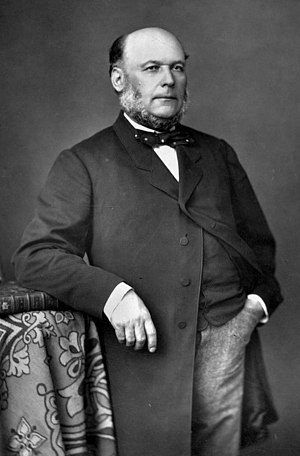 | |
| President of Azmara | |
| In office 27 November 1855 – 25 November 1867 | |
| Preceded by | Office established |
| Succeeded by | Jorś Wilhjâlmssun |
| Personal details | |
| Born | March 18, 1800 Sloh, County of Hytklif, Azmaran Confederation |
| Died | January 10, 1876 (aged 75) Aalmsted, Azmara |
| Cause of death | Dementia (disputed) |
| Resting place | Stefansburg Cathedral, Aalmsted, Azmara |
| Political party | Progressive |
| Spouse | Eleina Hjalmarsdohter (m. 1826) |
| Children | 2 |
| Alma mater | Sloh College |
Mikel Hankssun (18th March 1800 - 10th January 1876) was an Azmaran political leader, lawyer and statesman who served as the first President of Azmara between 1855 and 1867. A leading figure in the Revolution of 1855, he is viewed as one of the founders of republican Azmara alongside his political rival Jorś Wilhjâlmssun.
Ideologically an Azmaran nationalist and radical liberal, Hankssun sought to create a secular Azmaran nation unified by a shared cultural and linguistic heritage and ruled by a republican government inspired by the Seyresian principle of separation of powers and the principle of universal rights of man.
Some people
Harald Alekssun | |
|---|---|
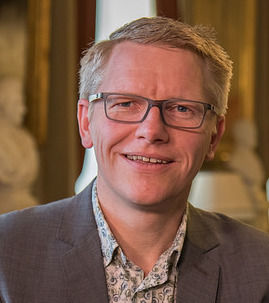 Alekssun in 2017 | |
| Born | March 21, 1967 |
| Nationality | Azmaran |
| Alma mater | University of Westmaark |
| Occupation | |
| Years active | 1994 - present |
| Known for | De Werald |
| Political party | Green |
| Spouse(s) | Ana Jorśdohter (m. 1993) |
| Children | 2 |
Alan Freissun | |
|---|---|
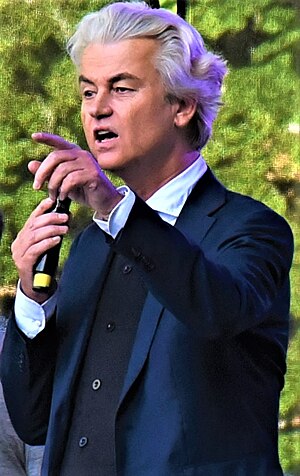 Freissun at Faarsejenawaarden 2019 | |
| Born | July 2, 1962 Saltsdyyk, Sompland, Azmara |
| Nationality | Azmaran |
| Alma mater | University of Aalmsted |
| Occupation |
|
| Years active | 1984 - present |
| Political party | Independent |
| Spouse(s) | Jorśena Alansdohter (m. 1995; div. 2011) Maarijana Leifsdohter (m. 2012) |
Kaþeriina Eryksdohter | |
|---|---|
 Eryksdohter in 2018 | |
| Born | January 2, 1965 |
| Nationality | Azmaran |
| Spouse(s) | Alaana Peitursdohter (m. 2005) |
| Institution | University of Aalmsted |
| Field | Macroeconomics |
| School or tradition | Aalmsted school |
| Alma mater | University of Aalmsted (BA 1987) Sloh College (PhD 1994) |


